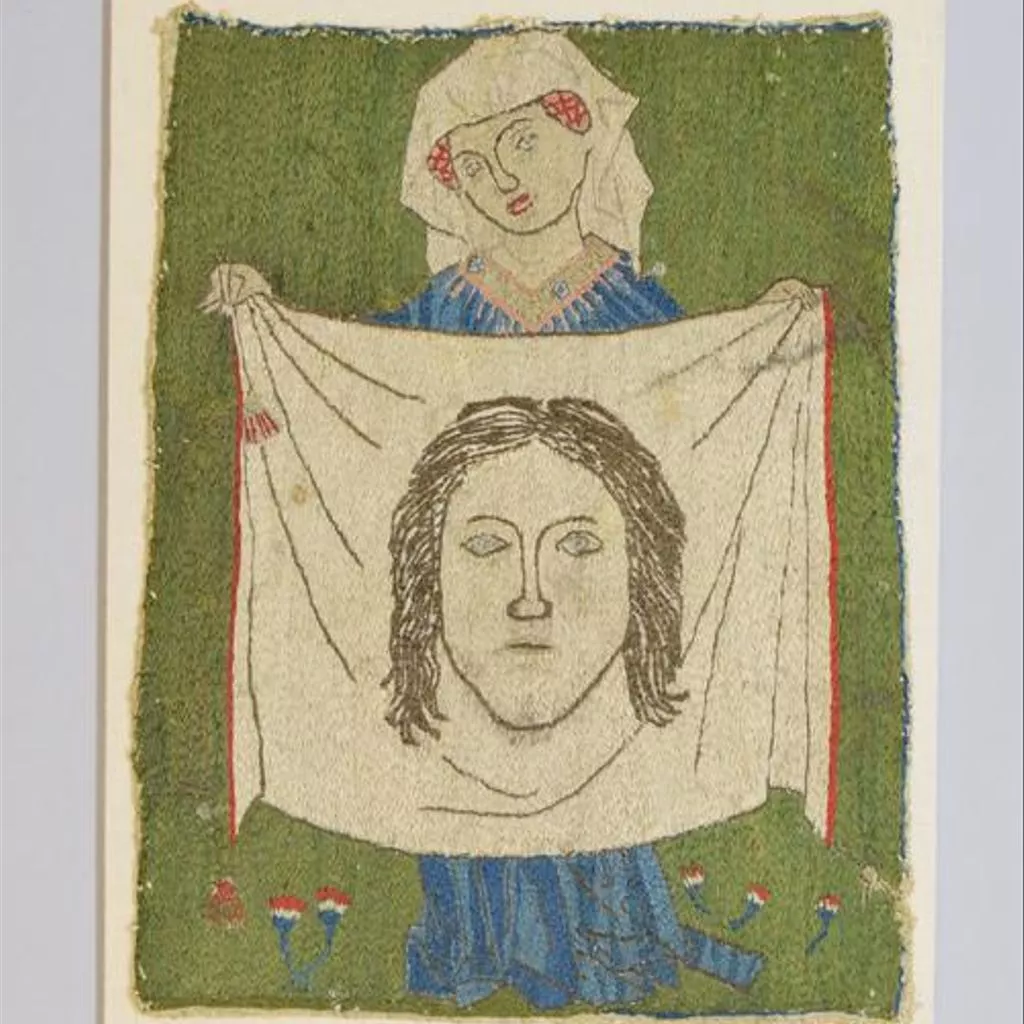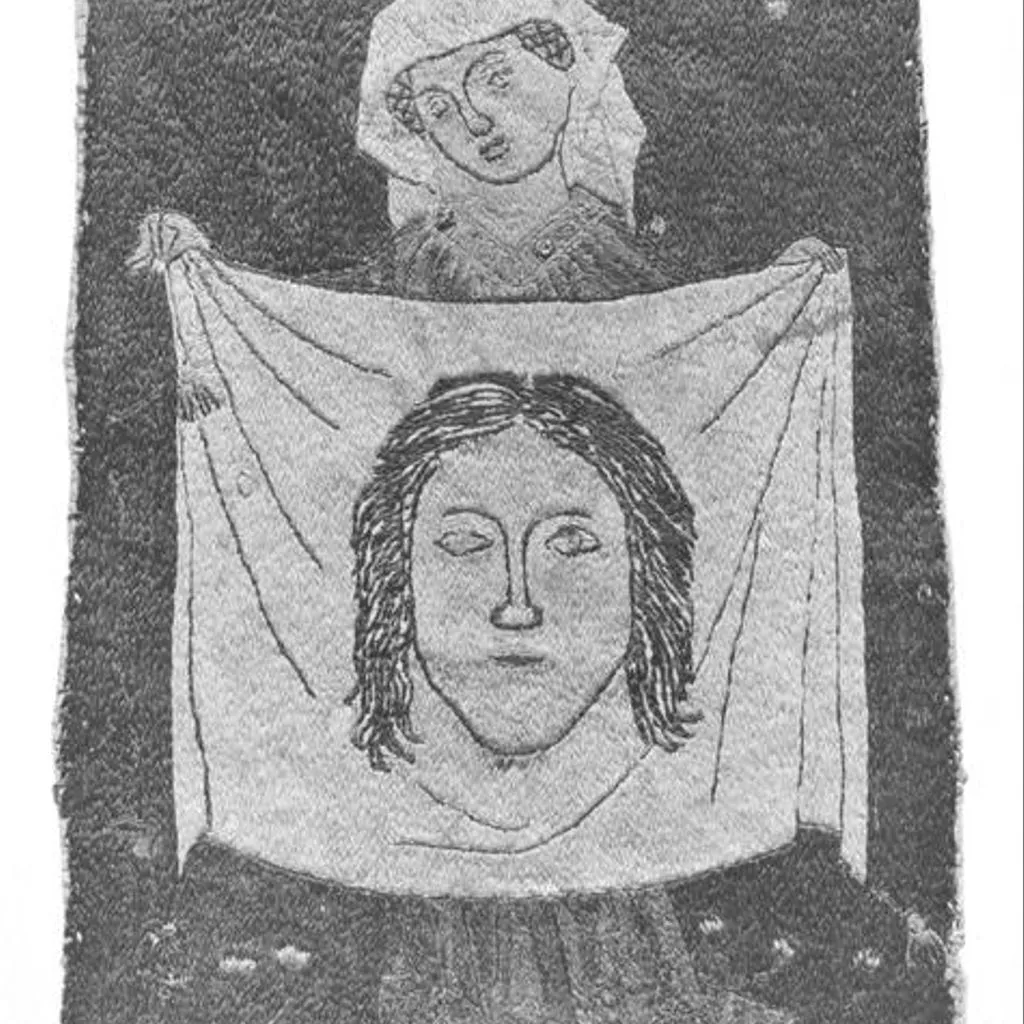Description
Green burse panel depicting St. Veronica showing the miraculous image of the face of Christ; 1400-99, probably German
Saint Veronica is an important and popular figure in Catholicism, despite the fact she does not appear in any of the four canonical gospels. She later became known as the pious woman who pitied Jesus as he bore the cross to Golgotha, and so soothed him by wiping his face with a napkin, or her veil. The image of his face is said to have become miraculously imprinted upon the cloth. The Sudarium, or Veil of Veronica, as it came to be known, became one of the most important relics in the Catholic world. Today, there are at least six relics which claim to be the veil of St. Veronica.
The burse is an important liturgical textile, and is a sort of pouch used to store the corporal, a square white linen cloth which lays beneath the chalice and paten during Mass. Whereas the corporal cannot be richly decorated, there are no such rules regarding the burse. The deployment of this particular saintly figure as a decorative motif is not uncommon. St. Veronica's supposed personal modesty and compassion held obvious appeal for the church, and the tantalising notion of a relic which was not just attributed to Christ, but which also showed an image of his face, is appropriate given that Mass itself provides contact with the body of Christ.
Rich textiles such as this were a very visible method of promoting the glory of Christ, and could be equally beneficial to the patrons whose money was spent in their commission or purchase.
Silk embroidered burse panel on a green ground mounted on a linen backing, St. Veronica is depicted holding aloft the napkin bearing the image of a beardless Christ








